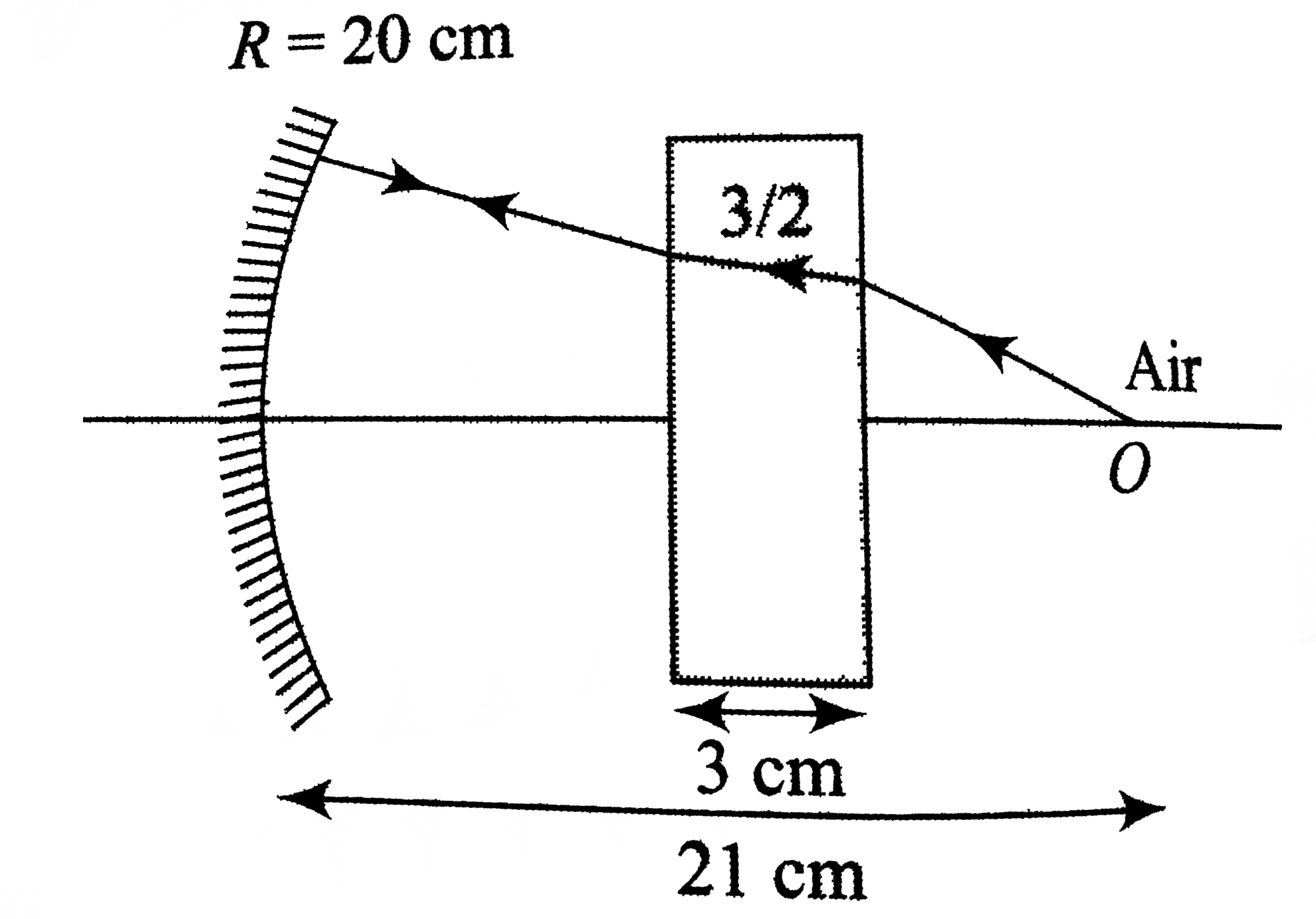An object is placed on the principal axis of concave mirror of focal length 10 cm at a distance of 8.0 cm from the pole. Find the position and the nature of the image.
To solve the problem of finding the position and nature of the image formed by a concave mirror, we can follow these steps:
1. Identify Given Values:
- Focal length of the concave mirror (F) = -10 cm (negative because it is a concave mirror).
- Object distance (U) = -8 cm (negative as per the sign convention for mirrors).
2. Use the Mirror Formula:
The mirror formula is given by:
1F=1V+1U
Rearranging this formula to find V (the image distance):
1V=1F−1U
3. Substitute the Known Values:
Substitute F and U into the rearranged mirror formula:
1V=1−10−1−8
4. Calculate the Right Side:
First, find a common denominator to perform the subtraction. The common denominator of 10 and 8 is 40:
1−10=−440,1−8=−540
Therefore:
1V=−440+540=140
5. Find V:
Taking the reciprocal gives:
V=40 cm
6. Determine the Nature of the Image:
Since V is positive, this indicates that the image is formed on the same side as the object. In the case of a concave mirror, a positive image distance means the image is virtual.
Final Results:
- Position of the Image: 40 cm from the pole of the concave mirror.
- Nature of the Image: Virtual.
- Focal length of the concave mirror (F) = -10 cm (negative because it is a concave mirror).
- Object distance (U) = -8 cm (negative as per the sign convention for mirrors).
The mirror formula is given by:
1F=1V+1U
Rearranging this formula to find V (the image distance):
1V=1F−1U
Substitute F and U into the rearranged mirror formula:
1V=1−10−1−8
First, find a common denominator to perform the subtraction. The common denominator of 10 and 8 is 40:
1−10=−440,1−8=−540
Therefore:
1V=−440+540=140
Taking the reciprocal gives:
V=40 cm
Since V is positive, this indicates that the image is formed on the same side as the object. In the case of a concave mirror, a positive image distance means the image is virtual.
- Position of the Image: 40 cm from the pole of the concave mirror.
- Nature of the Image: Virtual.
Topper's Solved these Questions
- BOOK - HC VERMA ENGLISHCHAPTER - GEOMETRICAL OPTICSEXERCISE - Objective -115videos
GEOMETRICAL OPTICS
- BOOK - HC VERMA ENGLISHCHAPTER - GEOMETRICAL OPTICSEXERCISE - Objective -27videos
GEOMETRICAL OPTICS
- BOOK - HC VERMA ENGLISHCHAPTER - GAUSS LAWEXERCISE - Short Question7videos
GAUSS LAW
- BOOK - HC VERMA ENGLISHCHAPTER - LIGHT WAVESEXERCISE - Question for short Answer11videos
LIGHT WAVES
Similar Questions
An object is kept on the principal axis of a convex mirror of focal length 10cm at a distance of 10cm from the pole. The object starts moving at a velocity 20mm/sce towards the mirror at angle 30∘ with the principal axis. What will be the speed of its image and direction with the principal axis at that instant.
View SolutionAn object is placed on the principle axis of a concave mirror of focal length 10cm at a distance of 21cm from it. A glass slab is placed between the mirror and the object as shown in figure.
Find the distance of final image formed by the mirror.
 View Solution
View Solution
Knowledge Check
- Question 1 - Select One
An object is kept on the principal axis of a concave mirror of focal length 10cm, at a distance of 15 cm from its pole. The image formed by the mirror is:
AVirtual and magnifiedBVirtual and diminishedCReal and magnifiedDReal and diminished
An object is placed 40 cm from a concave mirror of focal length 20 cm. The image formed is
View SolutionAn object is placed at 20 cm from a convex mirror of focal length 20 cm. The distance of the image from the pole of the mirror is
View SolutionA 2.0cm tall object is placed perpendicular to the principal axis of a convex lens of focal length 10 cm. The distance of the object from the lens is 15 cm. Find the nature, position and size of the image. Also, find its magnification.
View SolutionAn extended object is placed perpendicular to the principal axis of a concave mirror of radius of curvature 20cm at a distance of 15 cm from the pole. Find the lateral magnification produced.
View SolutionAn extended object is placed perpendicular to the principal axis of a concave mirror of radius of curvature 20cm at a distance of 15 cm from the pole. Find the lateral magnification produced.
View SolutionThe image of an object placed on the principal axis of a concave mirror of focal length 12 cm is formed at a point which is 10cm more distance form the mirror than the object. The magnification of the image is
View SolutionA rod of length 10 cm lies along the principal axis of a concave mirror of focal length 10 cm in such a way that the end closer to the pole is 20 cm away from it. Find the length of the image.
View Solution

